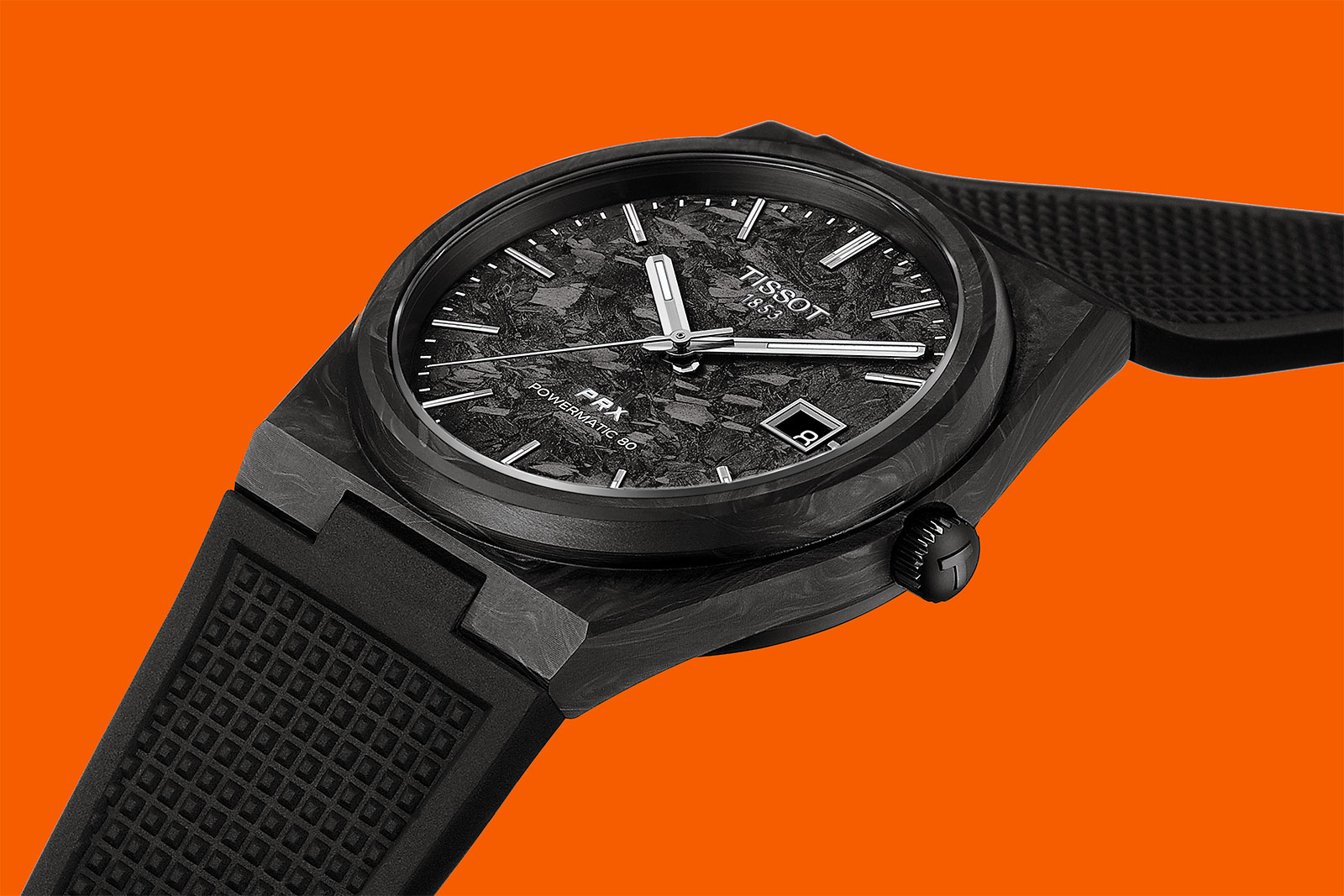The Tissot PRX 40 Powermatic 80 Arrives in Forged Carbon
Lightweight and affordable.
Well liked for its affordability and integrated-bracelet style, the Tissot PRX is now available in a novel material for the first time. The Tissot PRX 40 Powermatic Forged Carbon has a lightweight case of carbon composite matched with an integrated rubber strap, and it is equipped with a no-frills automatic movement.
Initial thoughts
From an LCD digital to a Grendizer edition, the iterations of the PRX are endless, but the model is still appealing with its simple style and inexpensive price tag. Like its peers, the PRX Forged Carbon model is a functional watch with a monochromatic aesthetic matches the design perfectly.
But it’s lighter than the steel versions of the model, and arguably more wearable. That said, carbon composite is not as durable as metal alloy, so this might not have the same easy robustness as the steel version.
At US$995, this does cost more than the base model PRX, but it is one of the most affordable Swiss-made watches with a carbon composite case and automatic movement.
No-frills fun
The new PRX retains the style and dimensions of its steel counterpart. The case is 40 mm in diameter and a one-piece construction of carbon composite with a press-fit steel back. It’s slight thicker than the steel model because the steel case back connects to an inner case of steel that sits within the carbon composite outer case.
The composite used for the case has a marbled finish that is typical of the material. Made up of white, grey, and black, the case is matched with a carbon composite dial featuring clean baton indices and hands that are filled with white Super-Luminova for a monochromatic look.
Inside is the Powermatic 80, a thoroughly industrial automatic that has a usefully long 80-hour power reserve. Variants of the movement are used by Tissot’s sister companies in the Swatch Group, including Swatch that employs the calibre inside the Blancpain-collaboration Scuba Fifty Fathoms.
Notably, the Powermatic 80 inside the carbon composite model has a silicon hairspring, while the lower-priced PRX models are mostly equipped with Nivachron hairsprings. While the practical advantage of silicon is likely nil for majority of wearers, it is a small extra that helps justify the higher price tag.
The movement is nothing to look at and probably should have been concealed behind a solid back
Key facts and price
Tissot PRX 40 Powermatic 80 Forged Carbon
Ref. T137.907.97.201.00
Diameter: 40 mm
Height: 11.2 mm
Material: Carbon composite
Crystal: Sapphire
Water resistance: 100 m
Movement: Powermatic 80
Functions: Hours, minutes, seconds, and date
Frequency: 21,600 beats per hour (3 Hz)
Winding: Automatic
Power reserve: 80 hours
Strap: Rubber strap
Availability: Now at boutiques and retailers
Price: US$995 before taxes
For more, visit Tissotwatches.com.
Back to top.